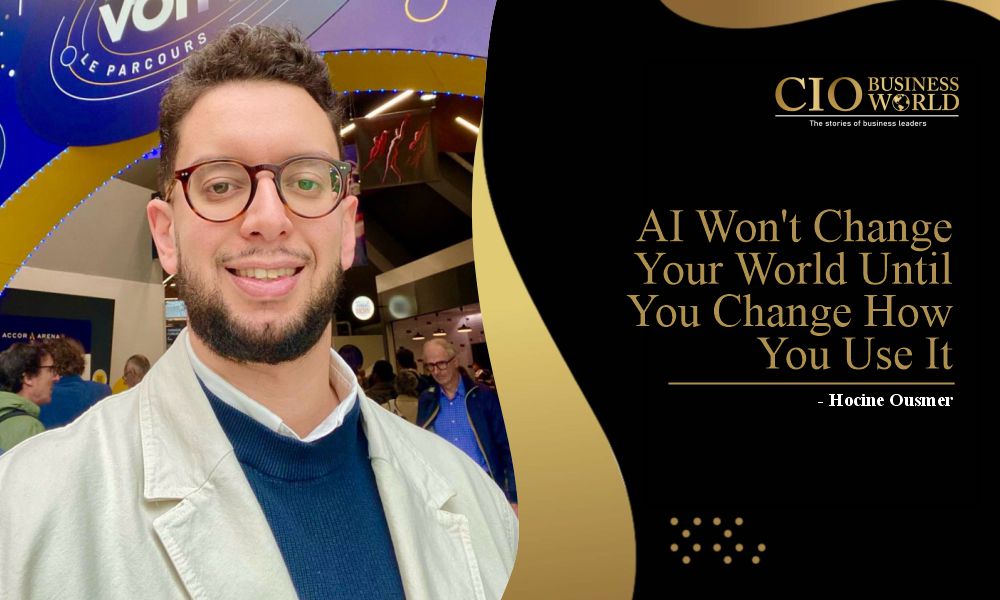AI is no longer a buzzword, it’s the infrastructure shaping our decision-making, our creativity, and our businesses. Yet, I often see one of two extremes: people either fear AI and avoid it entirely, or they overestimate it, expecting instant miracles. The truth is that AI, like any powerful tool, only delivers value when we test it, fine-tune it, and actually put it to use.
From my earliest tech projects, building a website at 11 and a mobile app at 15. I learned that technology should not be about passive admiration, but about making. It’s the act of creating, iterating, and experimenting that drives progress. That same principle applies to AI today: we must engage with it, shape it, and make it work for our context, instead of waiting for someone else to do it for us.
Testing AI Reveals Its Real Capabilities
AI has been hyped to the point that many expect it to replace entire job functions overnight. That’s not how it works. Testing is where reality meets expectation. Whether you’re a startup founder, a marketer, or a public sector leader, running small-scale experiments with AI will give you clarity on what it can and cannot do in your environment.
When I speak with business leaders, I often tell them: don’t start with a massive transformation project, start with a test that matters. Take a single pain point, maybe it’s summarizing long reports, predicting machine failures, or answering repetitive customer queries, and test an AI model on it. Observe the results, understand its strengths, and note where it fails. Testing removes the mystery and helps teams move from hype to measurable outcomes.
Fine-Tuning Makes AI Yours
Out-of-the-box AI is powerful, but generic. Fine-tuning is where it starts to speak your language, literally and figuratively. In my work at Datategy, we see clients gain exponential value when they fine-tune models with their own data. It’s what allows a bank’s AI to understand regulatory compliance language, or a railway operator’s AI to detect anomalies in sensor data specific to their trains.
Fine-tuning doesn’t just boost accuracy it builds trust. Teams become more confident using AI when they know it has been trained on their own context. It also reduces bias and errors, aligning outputs with company values and ethical standards. For me, this step is non-negotiable. If you want AI to help you make decisions, you must ensure those decisions are grounded in your reality, not in a generic dataset.
Using AI Builds the Muscle for Innovation
The biggest mistake I see is treating AI as a one-time project instead of a habit. Using AI daily even for small tasks is how individuals and organizations build the muscle for innovation. I like to say that AI is like a language: you become fluent only by speaking it regularly.
When teams use AI consistently, they discover new applications organically. A marketing team that first uses AI to analyze campaign data might next use it to generate creative briefs, then to predict customer churn. This evolution happens only when AI becomes part of the workflow, not an isolated pilot project.
Ethical and Transparent AI Starts with Active Participation
AI is not neutral, it reflects the data it’s trained on and the people who deploy it. This is why I developed the TPE Score (Transparency, Privacy, Explainability): to help organizations measure the integrity of their AI systems. But frameworks are not enough people must be actively involved.
By testing and fine-tuning AI, teams can spot issues like bias, privacy risks, or explainability gaps early. This is far more responsible than waiting for a black-box system to make critical decisions without oversight. I believe that ethical AI is a participatory process, it’s not about delegating control to machines, but about keeping humans in the loop.
The Competitive Advantage of Adoption
Finally, those who use AI will simply outpace those who don’t. AI is becoming the ultimate productivity multiplier. It shortens decision cycles, improves accuracy, and frees up time for high-value tasks. In marketing, for example, AI can help teams predict audience behavior, personalize content at scale, and optimize campaigns in real time.
But here’s the key: the advantage comes not from the technology itself, but from how quickly an organization learns to integrate it and i see it everyday. The companies that experiment, adjust, and adopt AI into their processes will be the ones leading their industries in the next decade.
Final Thought
Using AI is no longer optional, it’s a leadership imperative. As someone who has spent a career moving from marketing to AI leadership, I’ve learned that technology creates impact only when we engage with it directly, align it with human values, and make it a natural part of our decision-making.
If you haven’t started yet, start small, but start today. Test AI on a real problem. Fine-tune it to your data. Use it consistently. And in doing so, you’ll not only future-proof your organization but also ensure that AI works for people, not just for profit.
Who Is Hocine Ousmer?
Hocine Ousmer is a passionate technologist and innovation leader who has been shaping the digital world. From building websites as a child to leading complex AI projects today, Hocine has always believed that technology’s true power lies in its ability to create impact, not just noise. As Chief Marketing Officer, he combines his deep understanding of marketing with a hands-on maker’s mindset to help organizations adopt AI responsibly and effectively.
Recognized for his impact on the industry, Hocine was named one of the Top Influential Marketing Leaders to Watch in 2025, alongside receiving other prestigious awards that highlight his contributions to technology, ethics, and innovation. His work is driven by a commitment to ethics, transparency, and human-centric design, ensuring that every solution he promotes not only solves a problem but also makes life easier, smarter, and more meaningful for the people who use it.







